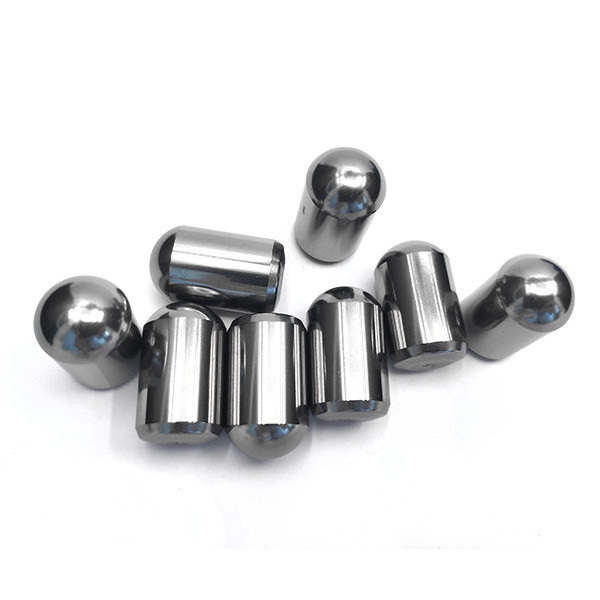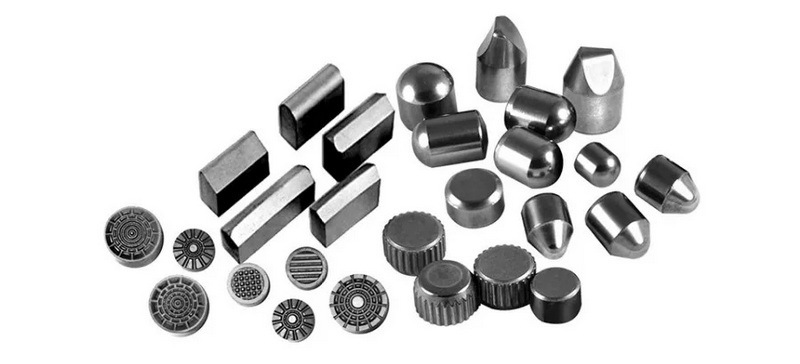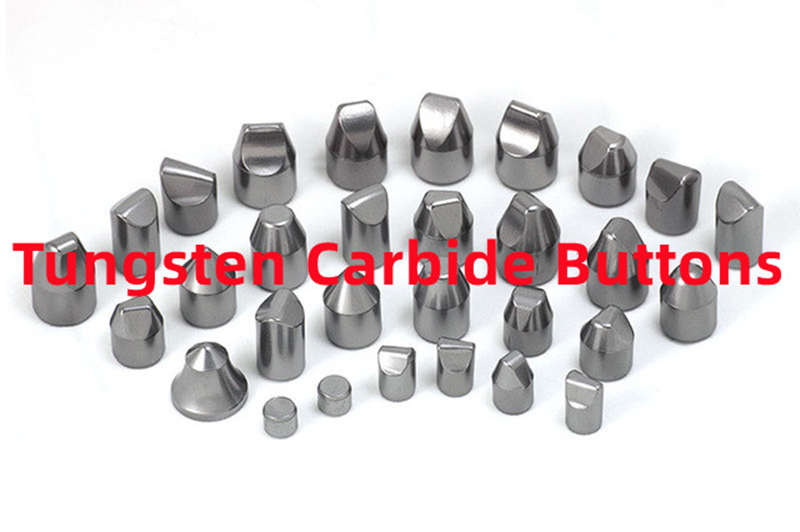Content Menu
● Introduction to Tungsten Carbide
>> Physical Properties of Tungsten Carbide
● Methods to Identify Tungsten Carbide
>> 1. Visual Inspection
>> 2. Magnetism Test
>> 3. Density Test
>> 4. Scratch Test
>> 5. X-Ray Fluorescence (XRF) Analyzer
● Applications of Tungsten Carbide
● Challenges and Limitations
● Advanced Applications and Innovations
● Environmental Considerations
● Recycling and Sustainability
● Conclusion
● FAQ
>> 1. What is Tungsten Carbide?
>> 2. How Do I Identify Tungsten Carbide?
>> 3. What Are the Advantages of Tungsten Carbide?
>> 4. What Are the Disadvantages of Tungsten Carbide?
>> 5. Where is Tungsten Carbide Commonly Used?
● Citations:
Tungsten carbide is a compound of tungsten and carbon, renowned for its exceptional hardness and durability. It is widely used in industrial applications such as cutting tools, drill bits, and wear-resistant components, as well as in jewelry due to its scratch resistance and hypoallergenic properties. However, distinguishing genuine tungsten carbide from other materials can be challenging without the right techniques. This article will guide you through various methods to identify tungsten carbide, including visual inspection, magnetism tests, density measurements, and chemical reactions.

Introduction to Tungsten Carbide
Tungsten carbide is formed by combining tungsten with carbon at high temperatures, resulting in a dense and robust material. Its hardness ranks between 9 and 9.5 on the Mohs scale, making it one of the hardest substances known, second only to diamond. This exceptional hardness, combined with high strength and resistance to corrosion, makes tungsten carbide an essential material in both industrial and consumer applications.
Physical Properties of Tungsten Carbide
- Hardness: Tungsten carbide has a Mohs hardness of 9 to 9.5, which is significantly higher than most metals, including steel.
- Density: It has a density of approximately 15.6 g/cm³, nearly twice that of steel.
- Magnetism: Tungsten carbide is non-magnetic, meaning it does not attract magnets.
- Thermal Properties: It has a high melting point of about 2,870°C and a low thermal expansion coefficient, making it suitable for high-temperature applications.
Methods to Identify Tungsten Carbide
1. Visual Inspection
Tungsten carbide typically has a grayish metallic appearance, while cemented carbide may appear darker or black due to the presence of cobalt or other binders. Visual inspection can also involve looking for markings or labels on the material, which often indicate its composition and origin.
2. Magnetism Test
Since tungsten carbide is non-magnetic, a magnet will not be attracted to it. This test is useful for distinguishing carbide from ferrous metals like steel.
3. Density Test
By measuring the weight and volume of the material, you can calculate its density. Tungsten carbide has a density of about 15.6 g/cm³, which is significantly higher than most metals.
4. Scratch Test
Tungsten carbide is extremely hard and can scratch glass easily. Using a carbide tip or a known hard material to scratch the surface can help identify it.
5. X-Ray Fluorescence (XRF) Analyzer
For precise identification, an XRF analyzer can determine the exact composition of the material, confirming the presence of tungsten and carbon.
Applications of Tungsten Carbide
Tungsten carbide is used in a variety of applications due to its unique properties:
- Industrial Tools: Cutting tools, drill bits, and wear-resistant components benefit from its hardness and durability.
- Jewelry: Popular for wedding bands and fashion rings due to its scratch resistance and hypoallergenic properties.
- Other Uses: Tips for trekking poles, studs for tires, and components in machinery.

Challenges and Limitations
Despite its advantages, tungsten carbide has some drawbacks:
- Cost: It is more expensive than many other materials due to the high cost of tungsten and cobalt, as well as the complex production process.
- Resizing Difficulty: Jewelry made from tungsten carbide cannot be resized easily, requiring special tools for adjustments.
Advanced Applications and Innovations
In recent years, tungsten carbide has seen advancements in its application areas:
- Aerospace Industry: Used in rocket nozzles and other high-temperature components due to its thermal stability.
- Medical Equipment: Employed in surgical instruments and implants due to its biocompatibility and durability.
- Nuclear Industry: Utilized in control rods for nuclear reactors because of its high neutron absorption cross-section.
Environmental Considerations
The production of tungsten carbide involves mining tungsten, which can have environmental impacts if not managed properly. Efforts are being made to improve mining practices and reduce waste in the production process.
Recycling and Sustainability
Recycling tungsten carbide is challenging due to its hardness and the difficulty in breaking down the material. However, recycling programs are becoming more prevalent as companies seek to reduce waste and conserve resources.
Conclusion
Identifying tungsten carbide involves a combination of visual inspection, magnetism tests, density measurements, and chemical reactions. Its exceptional hardness, durability, and resistance to corrosion make it a valuable material in both industrial and consumer applications. However, its high cost and difficulty in resizing are notable limitations. As technology advances, tungsten carbide continues to find new applications across various industries, contributing to its ongoing relevance and importance.

FAQ
1. What is Tungsten Carbide?
Tungsten carbide is a compound of tungsten and carbon, known for its exceptional hardness and durability. It is used in cutting tools, drill bits, and jewelry due to its high strength and resistance to wear and corrosion.
2. How Do I Identify Tungsten Carbide?
You can identify tungsten carbide by its grayish appearance, non-magnetic properties, high density, and ability to scratch glass. A magnetism test, density measurement, and scratch test can help confirm its presence.
3. What Are the Advantages of Tungsten Carbide?
Tungsten carbide offers exceptional hardness, durability, and resistance to corrosion and high temperatures. It is ideal for applications requiring materials that can withstand significant wear and deformation.
4. What Are the Disadvantages of Tungsten Carbide?
The main disadvantages include its high cost due to expensive raw materials and complex production processes. Additionally, tungsten carbide is difficult to resize, especially in jewelry applications.
5. Where is Tungsten Carbide Commonly Used?
Tungsten carbide is commonly used in industrial tools like cutting tools and drill bits, as well as in jewelry for its durability and hypoallergenic properties. It is also found in trekking pole tips and tire studs.
Citations:
[1] https://en.wikipedia.org/wiki/Tungsten_carbide
[2] https://www.allied-material.co.jp/en/techinfo/tungsten_carbide/features.html
[3] https://www.thermalspray.com/how-to-distinguish-real-tungsten-carbide-from-fakes/
[4] https://industrialmetalservice.com/metal-university/differentiating-tungsten-carbide-vs-steel-and-other-tooling/
[5] https://bansalcarbidebuyer.com/identify-carbide-scrap/
[6] https://www.thermalspray.com/questions-tungsten-carbide/
[7] https://carbidescrapbuyers.com/carbide-scrap-identification/
[8] https://carbide-usa.com/spotting-tungsten-carbide-household-products/
[9] https://shop.machinemfg.com/the-pros-and-cons-of-tungsten-carbide-a-comprehensive-guide/
[10] https://huanatools.com/how-to-identify-carbide-inserts-2/
[11] https://www.linde-amt.com/resource-library/articles/tungsten-carbide
[12] https://www.azom.com/properties.aspx?ArticleID=1203
[13] https://www.youtube.com/watch?v=cT1uKBo8lSA
[14] https://www.generalcarbide.com/wp-content/uploads/2019/04/GeneralCarbide-Designers_Guide_TungstenCarbide.pdf
[15] https://huanatools.com/how-to-identify-carbide-inserts/
[16] https://www.linkedin.com/posts/rick-schultz-96752a145_tungsten-carbide-gold-is-for-visual-identification-activity-7273744433077014528-oxDg
[17] https://www.dymetalloys.co.uk/what-is-tungsten-carbide/tungsten-carbide-grades-applications
[18] https://www.retopz.com/57-frequently-asked-questions-faqs-about-tungsten-carbide/
[19] https://www.tungco.com/insights/blog/frequently-asked-questions-used-tungsten-carbide-inserts/
[20] https://nj.gov/health/eoh/rtkweb/documents/fs/1960.pdf
[21] https://tuncomfg.com/about/faq/
[22] https://www.youtube.com/watch?v=FuZ_vvgGOs4
[23] http://www.tungsten-carbide.com.cn
















